"A wave from hell."
Matt Ketchum was mummering as he showed me the video he'd recorded on his phone of the terrifying moment when the tsunami hit his town a few days earlier.
Miyako, on Japan's north-eastern coast, became world renowned for footage of a jet-black wall of water hurling yachts over a coast-hugging highway.
The nautical debris was still evident when I arrived with my colleague Pol Reygaerts - including a huge cruiser jammed against the twin-columns of a flyover.
Equating the tsunami to a demonic force wasn't just Matt's reaction, an English teacher from Pennsylvania.
The obliteration of districts, if not entire towns, was described to me again and again as something quasi-evil.
The near-by town of Tora was another terrifying example of things being razed to the ground.
On arrival, Pol and I could identify a train station to the left and a baseball stand to the right. Between those two points - a distance of roughly half a kilometre - nothing was left standing. As a light snow fell, we stood and looked-on in disbelief.
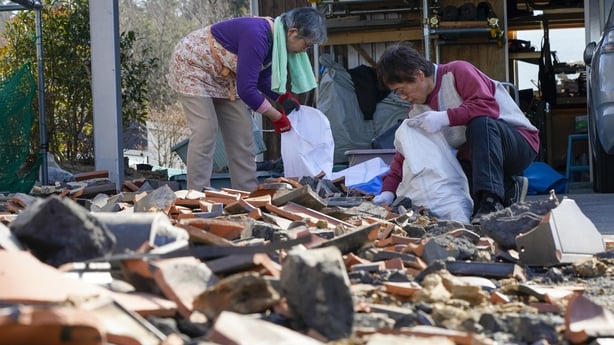
Yet the destruction was only half of it.
Walking through what remained of streets, and seeing the personal belongings of people who'd fled, or were more likely dead, was deeply uncomfortable. I felt like a voyeur stamping through their nightmare.
The scenes of torment were recurring.
I remember encountering one woman in another flattened town who was desperately searching for her elderly mother for the previous two days.
Such was the scale of the destruction in her neighbourhood, she couldn't even identify where her family home had once stood, and so didn't know where to concentrate her search.
A fear everyone shared in such towns was that a second tsunami could wreak even more havoc.
One day we encountered a red fire engine in the middle of the highway. A man with a screeching walkie-talkie shouted at us to quickly drive to the right and detour up a hill.
It turned out that a helicopter had spotted an incoming tsunami and the estimated impact was 15 minutes. An electronic repetitive ping was reverberating around a small crowd of motorists, as we strained our eyes out onto the Pacific Ocean.
Ultimately, nothing happened. Yet terror was etched on the faces of a couple standing on a near-by bridge, wrapped in blankets, looking fearfully out to sea. They knew only too well what a second wave would mean.
Getting to Japan had been uniquely chaotic - even by the abnormal standards that journalists operate by.
I was in Brussels reporting on glacial developments at an EU leaders' summit when the call came.
The details were only emerging that a magnitude 9 earthquake had caused a tsunami which triggered a Level 7 nuclear accident when it engulfed the Fukushima Daiichi nuclear power plant.
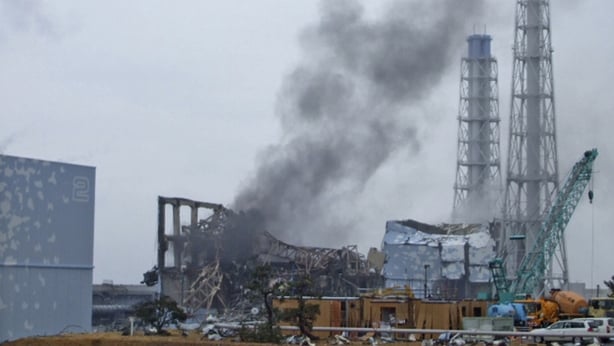
There was widespread destruction on Japan's eastern coastline. The death toll was estimated in the thousands.
I was informed that making the flight from Paris to Tokyo was extremely tight - Pol and I would have to get to the main train station in Brussels in less than an hour, get off at Charles de Gaulle airport and literally run to departures.
While just appointed Europe Correspondent for RTÉ News - my family and I had yet to move to the city. My suit and couple of shirts for a supposed 2-day trip to the Belgian capital was clearly going to be of little use in a disaster zone.
My colleague, and long-time friend, Tony Connelly generously intervened. As we're roughly the same height and build, he gave me the keys to his apartment, and I plundered his jeans, boots, jumpers and coat - carting them all off in his backpack.
Neither Pol nor I had been in Tokyo before. We arrived at night but the density of the metropolis, with its skyscrapers bedecked in neon lights, was startling.
Within minutes of arriving at our hotel, we experienced the first of many after-shocks.
The minute-long tremor felt like an underground train rolling one metre underneath your feet. I unconsciously held my breath once the sensation began.
The following morning, it was apparent that we had zero opportunity of getting north to Sendai province, where the tsunami hit the Fukushima plant.
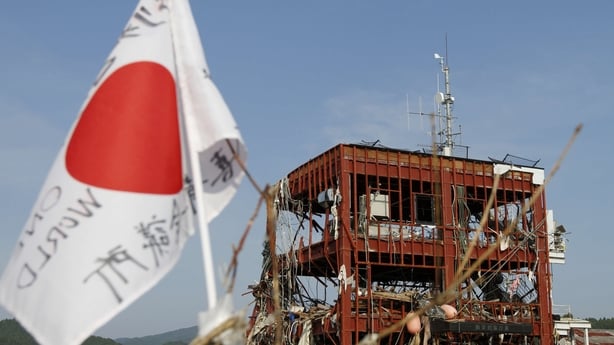
The roads were clogged, with priority being given to emergency services trying to get to grips with a plant leaking radiation.
So, we decided to go another route.
We flew nearly 700 kilometres to the northern island of Hokkaido, took a ferry south across Mutsu Bay to the mainland and then a taxi to Misawa town, which had just become a US base for relief efforts.
From there, we could drive south unimpeded to reach areas which had been devastated by the tsunami. We rarely saw another TV crew.
One of the first places we visited was Noda village. Its seafront district had been flattened. Multi-story buildings had pancaked. Amid the rubble, soldiers in fatigues were pulling at the masonry and trying to locate the bodies.
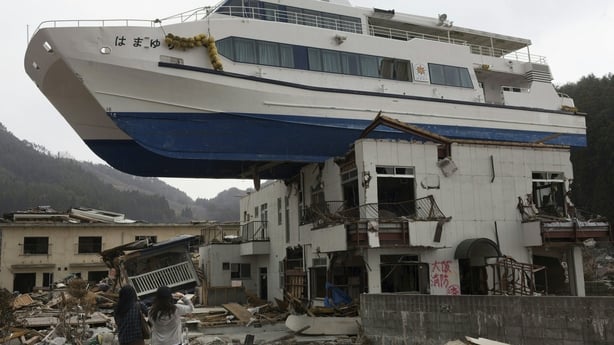
There were also search-and-rescue teams on the ground. Dressed uniformly in orange boiler suits, their mission of finding the wounded was being scaled back as hopes receded of finding anyone alive.
At the edge of the destruction, we met one man trying to clear his house. He took out a measuring tape to show us how the waters had risen 1.9 metres in his dining room.
He then beavered away, amid the stench and the filth, shovelling tsunami sludge from his house.
Despite the gloom, it was noticeable how people were 'doing it themselves' rather than waiting for assistance. They appeared stoic and self-reliant. No-one seemed to want to waste any time on blaming the government. The parts of the town, which hadn't been destroyed, were trying to reopen.
For those who were worst affected, as they had no house to clean, the only thing to do was pack-up their meagre belongings and leave.
Telling such stories was complicated from a logistical point of view.
RTÉ's main evening news was on air at 3am local time.
Pol and I could only edit our reports and go live into the Six One News from Misawa, as it was the only town which had a guaranteed power supply.
This meant driving five or six hours down to the disaster zone each morning, knowing we had to make it back to Misawa by midnight.
The only way to operate therefore was for Pol and I to sleep in the car.
One thing we learned quickly was to only work with taxi drivers whose cars were powered by Liquified Petroleum Gas.
I remember passing through the town of Hachinohe, where the queues for petrol were a mile and a half long, but we were able to get our LPG within minutes.
By the time we returned to Tokyo more than a week later, the aftershocks had become so common that we no longer took any notice of them.
What did standout, however, was the huge public concern about radiation - a topic which wasn't centre stage in the destroyed districts of north-eastern Japan.
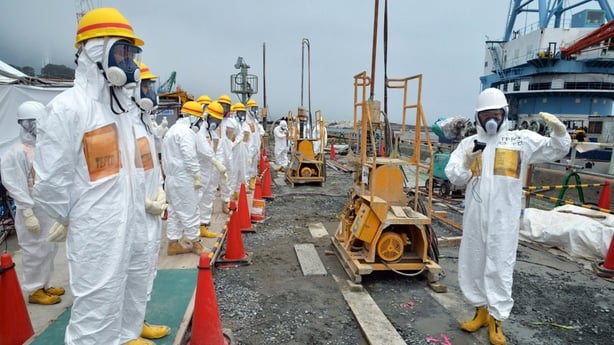
In Toyko, which is around 250 kilometres from the Fukushima plant, people had learned that substantial amounts of radioactive material had been released into the environment, on three occasions, over the five days following the tsunami.
The topic of conversation on radio and television was whether the air was contaminated; whether the milk or food could be contaminated; or whether the 20-kilometre exclusion zone around the plant needed to be expanded.
The reassurance being provided by government officials wasn't being taken at face-value by the public anymore. I had worked on assignment in Chernobyl a few years previously and felt the increasing scepticism in Japan of the official line was probably well deserved.
For some in the capital, they just decided to leave and escape to the south.
That exodus was very apparent when standing in the enormous Shinjuku station at lunchtime rush-hour.
My guidebook proclaimed it catered for 3.6 million people a day. The day were there, the station was almost empty.
A decade on, what do we know?
According to the World Health Organization, the tsunami resulted in the deaths of more than 15,891 people, with a further 2,579 people still missing.
Salvage work is still ongoing at the Fukushima-Daiichi plant.
While tonnes of spent uranium fuel have been moved to safer locations, it will take years if not decades to extract the melted reactor cores and other debris.
When I returned to Brussels from Tokyo back in 2011, I rang Tony Connelly about dropping back his jeans, boots, jumpers, coat and backpack.
His reply: "No thanks. You can keep 'em."







